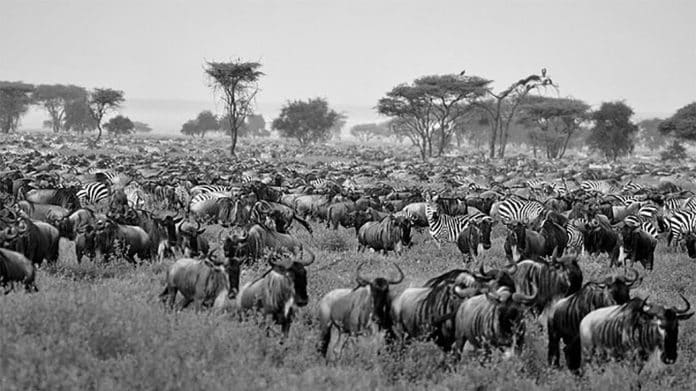Witness the Great Migration: The Best Time to Visit Tanzania for Spectacular Wildlife Encounters
Are you ready to witness one of nature’s greatest spectacles? Tanzania is known for its breathtaking wildlife encounters, and there’s no better time to experience the wonder than during the Great Migration. Each year, millions of wildebeest, zebras, and other animals embark on a treacherous journey across the plains of Tanzania in search of greener pastures. This amazing migration is a must-see for nature enthusiasts and wildlife lovers alike. That is why in this article, we will be looking at the best time for migration in Tanzania.
From the vast Serengeti to the iconic Ngorongoro Crater, Tanzania offers unparalleled opportunities to observe the circle of life in action. Imagine watching herds of graceful wildebeest traversing the grasslands, hearing the thundering hooves, and witnessing the raw power of nature. It’s a mesmerizing sight that will leave you in awe. It is this spectacular sight that has caused many to consistently ask the question: when is the best time to visit Tanzania for migration ?
To make the most of your wildlife adventure, timing is everything. The Great Migration occurs throughout the year, but certain months offer more spectacular sightings than others. The best time for migration in Tanzania is during the peak migration season. During this season, you’ll increase your chances of witnessing thrilling river crossings and dramatic wildlife encounters.
Understanding the Wildlife Migration Patterns in Tanzania
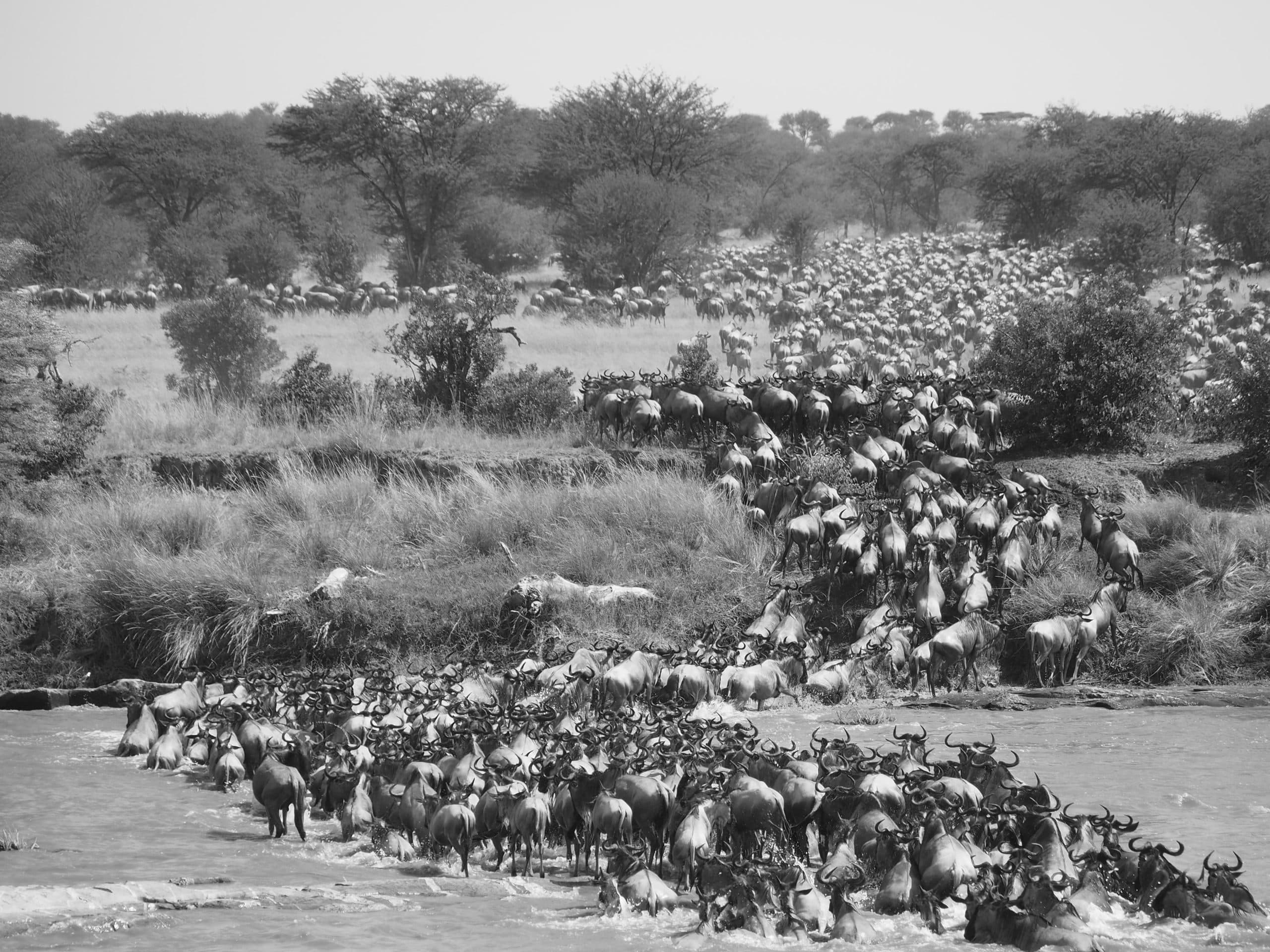
Tanzania’s Great Migration is a remarkable natural phenomenon that spans across different regions and seasons. It’s important to understand the general migration patterns to know the best time to visit Tanzania for migration. The migration is driven by the search for water and fresh grazing lands. The journey is a continuous cycle that repeats year after year, as the animals respond to the changing seasons.
During the dry season, which usually begins in June and extends to October, the wildebeest and zebras gather in the Serengeti’s western corridor. This is where the cycle begins, as they prepare for their long journey north. This long journey is what most come to see and it is also why this period is considered the best time for migration in Tanzania. As the rains start to fall, usually in November, the herds move towards the southern Serengeti plains, where they give birth to their young during the calving season.
Once the young calves are strong enough, the herds begin their northward migration in search of better grazing. They cross the treacherous Mara River, often facing danger from crocodiles and other predators. If you want to see the river crossings, the best time to visit Tanzania for migration would be in this period. The herds spread out across the northern Serengeti and eventually cross the border into Kenya’s Maasai Mara Reserve. The cycle continues as the animals make their way back south, completing the Great Migration.
The Best Time to Visit Tanzania for the Great Migration
To witness the Great Migration in all its glory, it’s essential to plan your trip during the peak migration season. The best time for migration in Tanzania can vary from year to year, depending on the rainfall patterns. However, there are certain months that consistently offer incredible wildlife sightings.
The best time to visit Tanzania for migration is generally from July to September. During this period, the herds are usually crossing the Mara River, presenting an awe-inspiring spectacle of nature. The river crossings are particularly dramatic, as thousands of wildebeest and zebras brave the strong currents and lurking predators.
If you’re interested in witnessing the wildebeest calving season, the best time for migration in Tanzania is between late January and February. This is when the herds gather in the southern Serengeti plains to give birth. It’s a magical time to visit, as you’ll have the opportunity to witness the adorable newborns taking their first steps and experiencing the world around them.
Witnessing the Wildebeest Calving Season
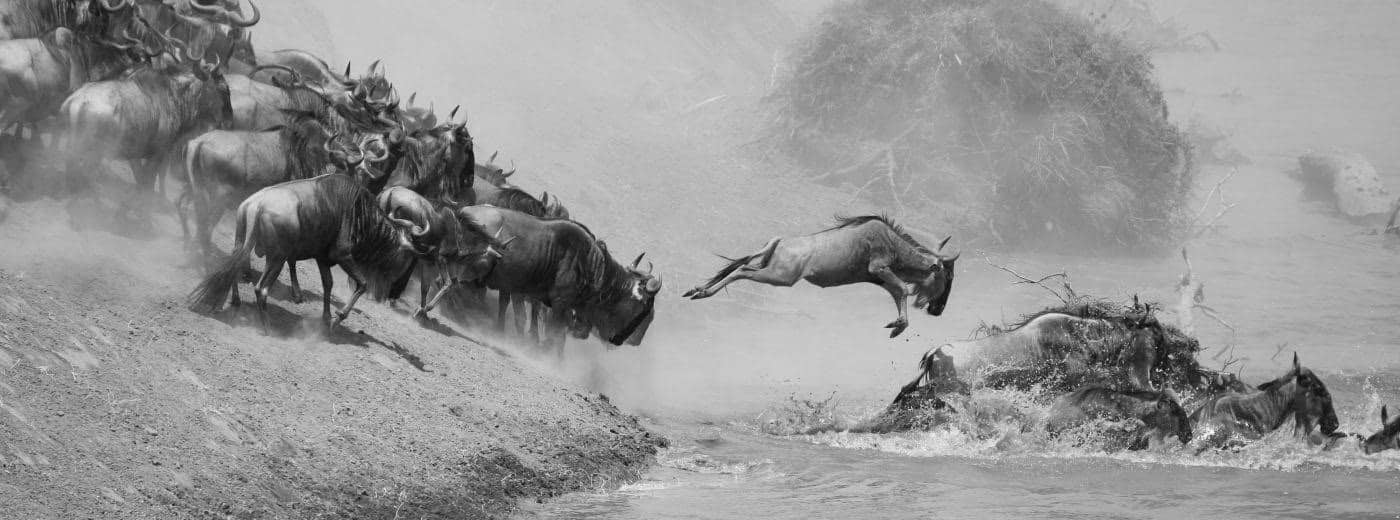
The wildebeest calving season is a unique and heartwarming experience that shouldn’t be missed, infact, the best time to visit Tanzania for migration is during the calving season. Imagine the vast plains of the Serengeti dotted with newborn wildebeest, their tiny bodies wobbling as they attempt to stand for the first time. It’s a sight that will melt your heart and leave you in awe of nature’s miracles.
Another reason why this period is considered the best time for migration in Tanzania is because of the predator-prey relationship on display. In this period, predators are on the prowl, as vulnerable young calves offer easy prey. Cheetahs, lions, and hyenas are commonly seen in the vicinity, making for thrilling wildlife encounters. Witnessing a predator-prey interaction during the calving season is a testament to the circle of life and the harsh realities of the wild.
While it is true that the best time to visit Tanzania for migration is during the calving season, to have a truly wonderful experience, it’s important to choose a reputable tour operator with experienced guides who understand wildlife behavior and prioritize conservation. Respecting the animals’ space and maintaining a safe distance is crucial to ensure their well-being and minimize disturbance.
Tips for Planning Your Safari During the Great Migration
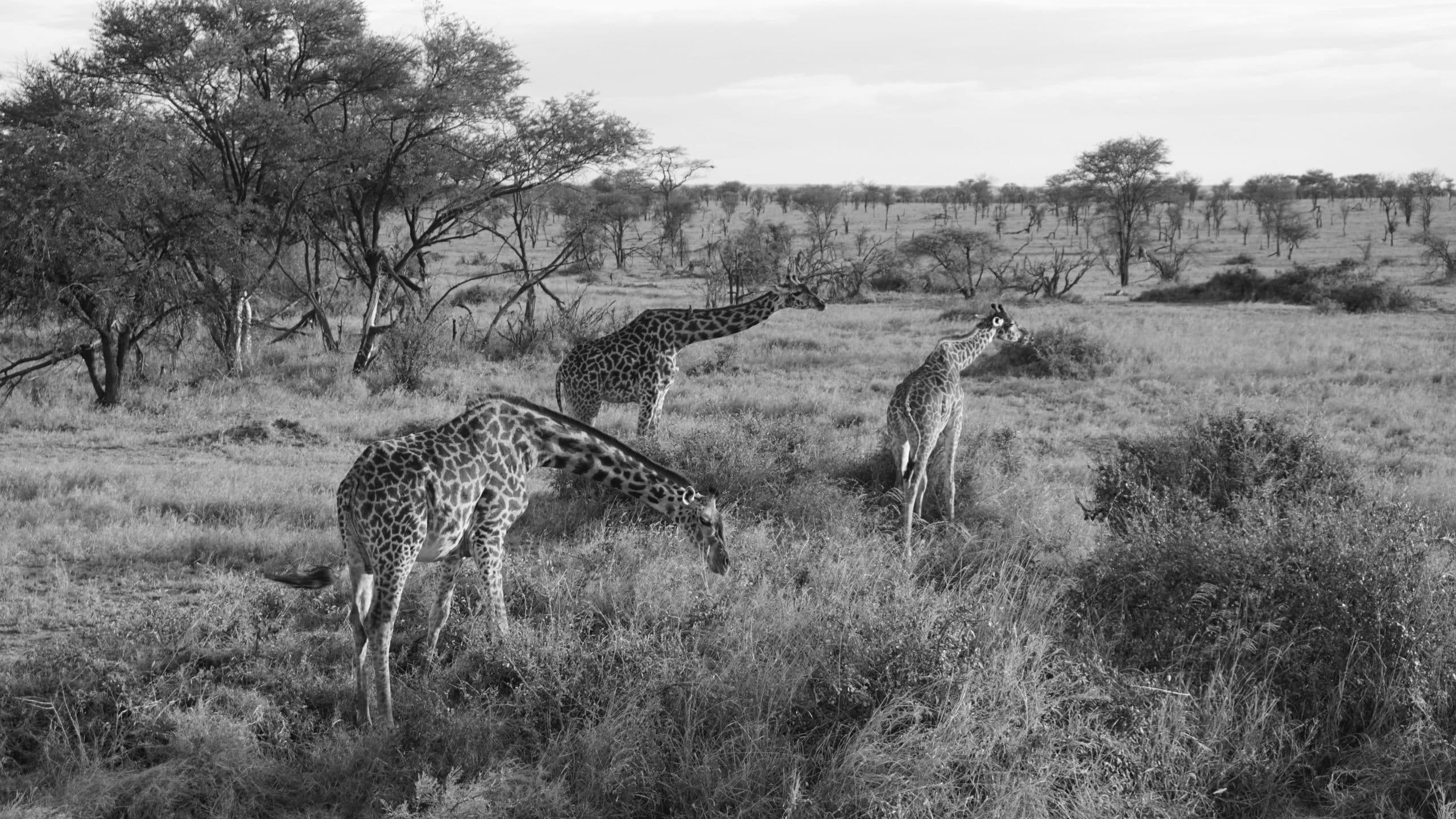
Choosing the best time for migration in Tanzania requires careful consideration to make the most of your experience. Here are some tips to help you plan your trip:
- Book in advance: The Great Migration attracts travelers from all over the world, so it’s essential to secure your accommodations and safari tours well in advance. This will ensure you have a spot during the peak migration season and allow you to choose the best lodges or campsites.
- Choose the right location: The Great Migration covers a vast area, so it’s important to choose the right location for your safari. The Serengeti National Park and the Maasai Mara Reserve in Kenya are the two primary areas where the migration takes place. Research the different regions and consult with your tour operator to determine the best location based on the time of year you plan to visit.
- Consider a private safari: To truly immerse yourself in the Great Migration experience, consider a private safari. This allows you to have a dedicated vehicle and guide, giving you more flexibility and personalized attention. Private safaris also provide the opportunity to explore off-the-beaten-path areas and have a more intimate wildlife encounter.
- Pack appropriate clothing: Tanzania’s weather can be unpredictable, so it’s essential to pack layers and be prepared for both hot days and cooler nights. Opt for neutral-colored clothing to blend in with the surroundings and avoid bright colors that may startle or disturb the wildlife.
- Bring binoculars and a good camera: To fully appreciate the details of the Great Migration, bring a pair of binoculars to enhance your wildlife viewing. A good camera with a telephoto lens will also allow you to capture stunning close-ups and action shots of the animals in their natural habitat.
By following these tips, you’ll be well-prepared to embark on an unforgettable safari adventure during the Great Migration.
Top National Parks and Reserves for Wildlife Encounters
Tanzania is blessed with an abundance of national parks and reserves that offer incredible wildlife encounters. Here are some of the top destinations to consider when picking the best time to visit Tanzania for migration:
- Serengeti National Park: As one of Africa’s most iconic wildlife destinations, the Serengeti National Park is a must-visit during the Great Migration. Its vast plains provide the perfect backdrop for witnessing the wildebeest herds in action. The park is also home to an array of other wildlife, including lions, elephants, giraffes, and cheetahs.
- Ngorongoro Conservation Area: The Ngorongoro Crater, located within the Ngorongoro Conservation Area, is a UNESCO World Heritage Site and a natural wonder. This volcanic caldera is home to a diverse range of wildlife, including the Big Five. Witnessing the Great Migration from the rim of the crater offers a unique perspective and breathtaking views.
- Tarangire National Park: Known for its large elephant herds and baobab trees, Tarangire National Park is another fantastic destination for wildlife encounters. During the dry season, the park becomes a gathering point for animals seeking water from the Tarangire River. Witnessing the herds of elephants, wildebeest, and zebras against the backdrop of the baobab-studded landscape is a sight to behold.
- Maasai Mara Reserve: Although located in Kenya, the Maasai Mara Reserve is an extension of the Serengeti ecosystem and a crucial part of the Great Migration. If you have the opportunity, including a visit to the Maasai Mara in your itinerary will allow you to witness the river crossings from a different perspective. The reserve is also known for its dense population of predators, making for thrilling wildlife encounters.
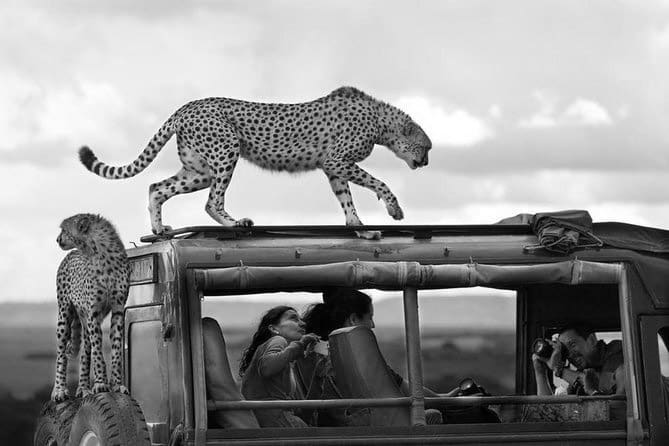
These are just a few of the many national parks and reserves in Tanzania that offer incredible wildlife encounters. Each destination has its own unique features and attractions, so consider consulting with your tour operator to create an itinerary that suits your preferences.
Accommodation Options During the Great Migration
Tanzania offers a wide range of accommodation options to suit every traveler’s needs and preferences. Whether you prefer luxury lodges, tented camps, or budget-friendly options, there’s something for everyone. Having considered the best time for migration in Tanzania, here are some popular accommodation choices to look into as well :
- Luxury lodges: For those seeking an indulgent and memorable experience, luxury lodges provide unparalleled comfort and service. Many lodges are strategically located in prime wildlife viewing areas, offering breathtaking views of the Great Migration. Enjoy spacious suites, gourmet dining, and personalized safari experiences tailored to your preferences.
- Tented camps: Tented camps offer a unique and authentic safari experience, allowing you to immerse yourself in the sights and sounds of the wilderness. These camps often blend seamlessly into the natural surroundings, providing a close-to-nature experience without compromising on comfort. Fall asleep to the sounds of wildlife and wake up to stunning sunrise views.
- Mobile camps: Mobile camps are set up in different locations throughout the year, following the movement of the Great Migration. These camps offer a flexible and immersive experience, allowing you to be in the heart of the action. Wake up to the sight of wildebeest outside your tent and enjoy the exclusivity of a small camp in the wilderness.
- Budget-friendly options: If you’re traveling on a budget, there are also budget-friendly accommodation options available near the national parks and reserves. These options may include simple guesthouses or campsites, providing the essentials for a comfortable stay without breaking the bank. Keep in mind that availability may be limited during the peak migration season, so it’s advisable to book in advance.
Regardless of your accommodation choice, ensure that it aligns with your priorities and preferences. Whether you’re seeking luxury and pampering or a more immersive and rustic experience, Tanzania has something for everyone.
Other Wildlife Experiences in Tanzania
While the focus is on the best time to visit Tanzania for migration and the great migration itself, it’s necessary to note that Tanzania is a land of many wonders and there are other incredible experiences to be had as well. Tanzania is home to a diverse range of wildlife, including the iconic Big Five – lions, elephants, buffalo, leopards, and rhinoceros. Here are some additional wildlife encounters to consider:
- Gorilla trekking: For a truly unique and unforgettable experience, consider adding gorilla trekking to your itinerary. Tanzania’s neighboring country, Uganda, is known for its gorilla population, and a visit to the Bwindi Impenetrable Forest offers the opportunity to observe these majestic creatures up close in their natural habitat.
- Birdwatching: Tanzania is a paradise for birdwatching enthusiasts, with over 1,100 bird species recorded. From the vibrant flamingos of Lake Manyara to the majestic African fish eagle, birdwatching in Tanzania is a delight for nature lovers. Explore the diverse habitats and keep your binoculars ready to spot some of Africa’s most beautiful birds.
- Cultural experiences: Tanzania is home to a rich cultural heritage, with diverse tribes and communities. Consider adding a cultural experience to your safari, such as visiting a Maasai village or learning about the Hadzabe hunter-gatherers. These encounters offer a unique insight into the local way of life and add a deeper dimension to your wildlife adventure.
These additional wildlife experiences can be combined with your Great Migration safari to create a comprehensive and diverse itinerary. Consult with your tour operator to determine the best options based on your interests and available time.
Conservation Efforts in Preserving the Great Migration
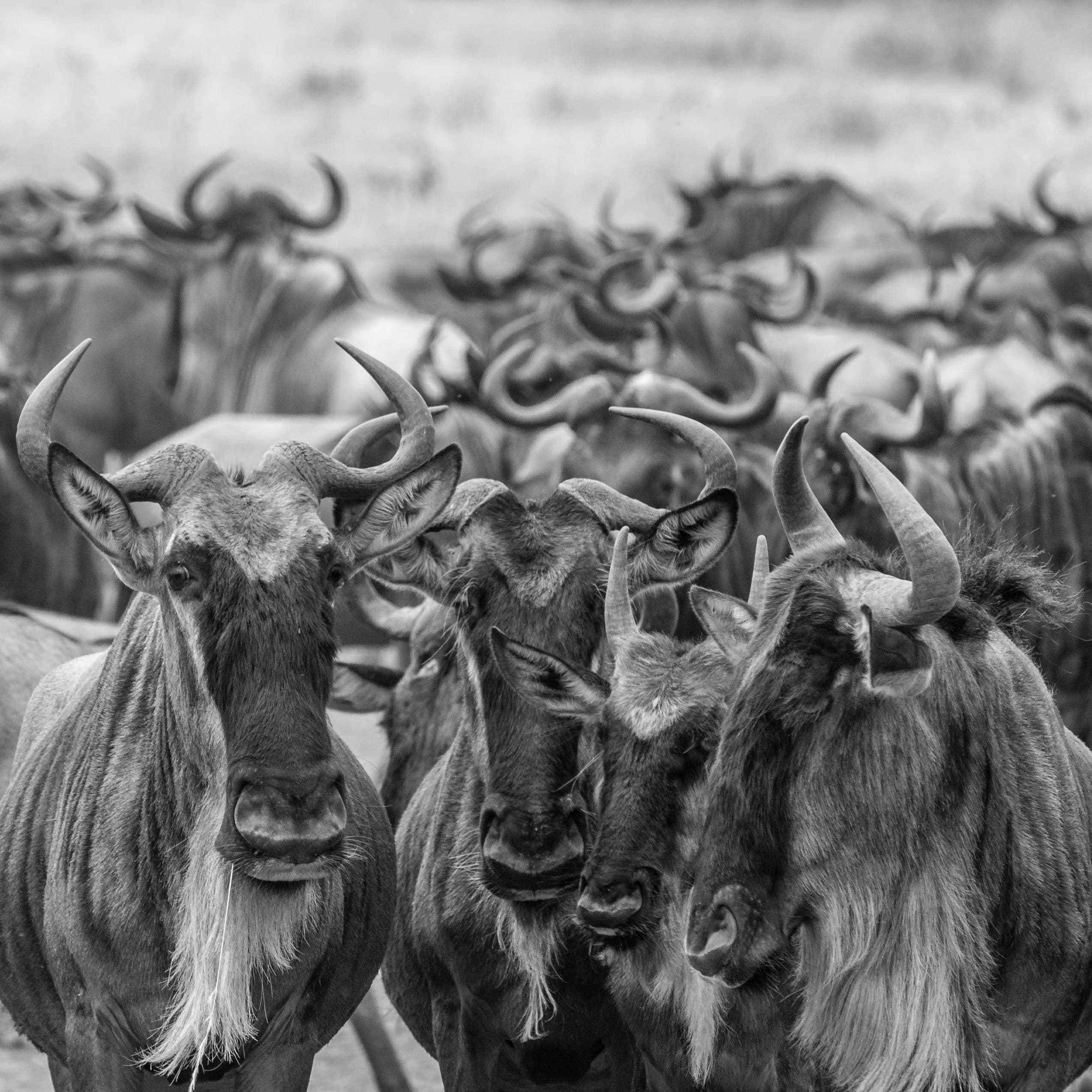
There are also some certain things to keep in mind when choosing the best time for migration in Tanzania. One of those things is conservation. Preserving the Great Migration and its delicate ecosystem is of utmost importance. Tanzania has made significant efforts in conservation to ensure the sustainability of this natural wonder. Various initiatives and organizations are working together to protect the wildlife and their habitats. Here are some conservation efforts in place:
- National parks and reserves: Tanzania’s national parks and reserves play a crucial role in protecting the Great Migration. Strict regulations and management plans are implemented to ensure the well-being of the wildlife and prevent human interference. Rangers and conservationists work tirelessly to monitor the animals’ movements and maintain the delicate balance of the ecosystem.
- Community involvement: Engaging local communities in conservation efforts is essential for the long-term sustainability of the Great Migration. Community-based conservation initiatives aim to create economic opportunities for local residents while promoting the protection of wildlife and their habitats. By involving communities in tourism activities, they become stakeholders in preserving the natural resources that attract visitors.
- Anti-poaching measures: Poaching poses a significant threat to the wildlife in Tanzania, including the animals involved in the Great Migration. Anti-poaching units, supported by government agencies and conservation organizations, work tirelessly to combat illegal hunting and protect the animals from harm. These efforts are crucial in ensuring the survival of the wildlife and the continuation of the Great Migration.
By supporting responsible tourism practices and choosing reputable tour operators who prioritize conservation, you can contribute to the preservation of the Great Migration. Respect the wildlife and their habitats, adhere to park regulations, and spread awareness about the importance of conservation.
Unforgettable Memories of the Great Migration in Tanzania
Witnessing the Great Migration in Tanzania is a truly awe-inspiring experience that will leave you with unforgettable memories. From the thundering hooves of wildebeest to the breathtaking river crossings, the Great Migration is a display of nature’s grand performance. The best time to visit Tanzania for migration is during the peak season. This will increase your chances of witnessing this remarkable spectacle.
Tanzania’s national parks and reserves offer unparalleled opportunities for wildlife encounters, from the Serengeti’s vast plains to the Ngorongoro Crater’s dramatic landscapes. After choosing the best time for migration in Tanzania, it is also necessary to choose the right accommodation option that suits your preferences, whether it’s luxury lodges, tented camps, or budget-friendly options.
The best time to visit Tanzania for migration doesn’t have to be only about the Great Migration though, you can also explore other wildlife experiences in Tanzania, such as gorilla trekking in Uganda or birdwatching in the diverse habitats. Don’t forget to support conservation efforts and responsible tourism practices to ensure the long-term sustainability of the Great Migration.
Join us in Tanzania and immerse yourself in the wonders of nature. Choosing the best time for migration in Tanzania is absolutely dependent on you and what you want to see. No matter what you choose, no matter the season, make sure you see the Great Migration, create lifelong memories, and experience the raw power and beauty of wildlife encounters. Prepare to be captivated by Tanzania’s extraordinary wildlife and the magic of the Great Migration.
For more articles related to Things to Do in Tanzania (Zanzibar), click here!

























